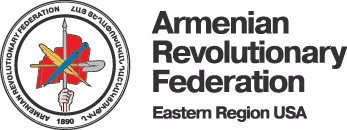The Call of the Crane: A Genocide Chronicle
By Arthur Hagopian
“Who remembers the Armenians?” Hitler once taunted.
History has made a mockery of his infamous claim, for who does not remember and mourn the destruction of a million and a half innocent Armenians a century ago?
Dispossessed, driven out of their homes, cast out into the desert, annihilated for no other reason other than that they worshipped a different God.
April 24, 1915, a blot on the history of mankind, a dark, damning episode in the annals of the Turkish nation that still has problems admitting culpability for the genocide.
While Germany beats its breast and bewails its horrent Nazi past, Turkey continues to wallow in denial, despite the relentless thunderstorm of documentary evidence categorically incriminating it.
The Call of the Crane by Haygan Mardikjan, a descendant of genocide survivors, is one of the latest to jolt the consciousness of man.
The book, artfully translated into English by Sarah Owen, traces the blood-splattered footsteps of Mardikjan’s grandparents, Hayganoush and Zakar, on their forced, doomed march towards their Calvary.
Prodded and pushed by their merciless Turkish herders along the burning sands of the desert, they were to endure a harrowing ordeal before their miraculous salvation and eventual sanctuary in foreign lands.
There, they would hear again the call of the crane, the “groong” as it sang:
“The heart of the wanderer (gharib) has turned to blood
“The heart full of longing
“When autumn comes, go to my land, ‘groong,’ and give greetings to my love.”
Mardikjan admits it was not easy to coax the story of survival out of her grandparents’ traumatized memories. They had survived only through the intercession and collusion of some decent, sympathetic Turks, a fact the author does not shy away from acknowledging.
“I would like to thank the Turks who helped the Armenians during the deportations. I would like to thank the Turks who helped my family. Without them, my family would probably not have survived the genocide.”
The Turkish soldiers had driven her grandparents, their friends, kin and neighbors from their ancestral village on a predetermined trek towards oblivion and perdition. There was no coming back home.
In the security and serenity of their adopted home in the Netherlands, Hayganoush and Zakar wanted to forget the horrendous inferno in which they had been engulfed. Both victims and eyewitnesses, they did not want to remember the unspeakable terror and despair that gripped mothers as they tried to save their children from the grasp of butchers and rapists by throwing them into the waters of a river, their shrieks of anguish drowning the gurgle of the turbulent waters.
As her appalled grandfather looked down upon the watery grave in the bosom of the Euphrates, “he could not see the water in places, there were so many children in the river …” At the foot of the bridge over the river that they were crossing, three little ones were tangled in the rocks: “you could clearly see they were triplets,” Zakar told Mardikjan.
Her grandmother’s aunt Mariam resorted to another desperately drastic bid to save her three children from the Turks: she poisoned them, preferring a quick and painless death for them to the certain torment and suffering that lay in store for them at the hands of the soldiers.
At one well where the deportees had stopped, two women tried to commit suicide and end their misery by pushing their heads under the water.
One morning, the soldiers spread out their handkerchiefs at everyone’s feet and demanded that the deportees contribute towards their “upkeep,” preferably in gold coins.
Two of her grandfather’s older cousins tried to dupe the soldiers by swallowing the few coins they had hidden in their clothing. When the soldiers found out, they slashed the women’s throats with their bayonets, intent on getting at the treasure one way or another.
Understandably, the author wanders why the deportees did not offer any resistance, or put up a struggle, against their vastly outnumbered captors.
The answer, she finds out, is that even if they had succeeded in overpowering the soldiers and escaping, there was nowhere they could go to find refuge since the whole of the Armenian heartland was being systemically pillaged by marauding Turkish armies.
In homage to the memory of the Armenian martyrs, Mardikjan decides on a courageous undertaking: she ventures into Turkey and retrace her grandparent’s footsteps, visiting all the “places of which they had spoken with love, but also with great sadness.”
It is a plaintive and painful journey but she comes back with a semblance of hope for the future.
In the spirit of magnanimity and nobility that characterizes Armenians, she can also see beyond the darkness and the evil.
“My grandfather always knew that he would never see the day on which Turkey admitted to the genocide. However, it has been his hope and wish that his grandchildren would live to see this event… Only then may the victims rest in peace and the bereaved be able to give the past a place. Then too, the Turks can finally put behind them a dark page in their history and focus on a peaceful future living in harmony with the many ethnic minorities that have their roots in the land currently known as Turkey, going back to a time long before Turkey even existed.”
The 164-page book published last year by Uitgeverij Soest (Boekscout.nl) of the Netherlands, is adorned with 40 pages of pictures and genealogical information.
Owen dedicates it to Raffi Hagopian, a classmate of her brother, whose dreams were nipped in the bud at a tender age.
Source: Armenian Weekly Mid-West
